
Elspeth MacRae delivering her keynote speech. Photo: Gerda Wolfrum, IUFRO Headquarters
Keynote speech by Elspeth MacRae, Scion, New Zealand
Read an interview with Dr. MacRae at: https://blog.iufro.org/2016/09/01/interview-with-dr-elspeth-macrae-scion-new-zealand/
Find biographic information at: http://www.iufro.org/events/congresses-regional/#c25751
The future holds tremendous challenges for the world with the increase in population probably being the largest one. As a consequence, we expect a need for a 70% increase in the amount of food available by 2050. The demographic changes and new lifestyles will put a growing pressure on the natural resources, exacerbate the effects of climate change, deplete soils and make water a scarce commodity, among other things. Read more…
IUFRO AO 2016 Session Highlights: All-Division 8 Conference
D8-05 Session title: Using tree rings to study events and morphological changes: relevance, methods and recent advances in dendrogeomorphic research – RG 8.02 Forest Biodiversity
Organizer: Christoph Corona
Wednesday, 26 October 2016, Room 303B
Drawing on the past for a better understanding of the present and reliable predictions of the future
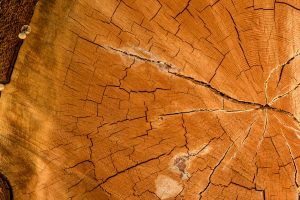
Tree rings. Photo: Geoff Roberts, USA.
Data on climate conditions of the past are vital for understanding present-day events triggered by climate change. This session looked at the two different fields, dendrochronology and landslide occurrence, on the common ground that they rely on such findings in order to shed light on factors contributing to adverse effects of climate change and to enable them to make predictions for the future. Read more…
Session B-05 (26): Approaches for Sustaining Agroforestry Systems and Practice in Asia and Oceania
Moderator: Swoyambhu Man Amatya, Coordinator IUFRO Division 1.04.00, Ministry of Forests and Soil Conservation, Nepal
Wednesday, 26th of October 2016, 10:30-12:30 (301 B)
Find more information on the IUFRO Division 1.04.00 Agroforestry at:
http://www.iufro.org/science/divisions/division-1/10000/10400/
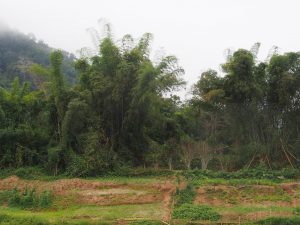
Agroforestry area in Laos. Photo: Renate Prüller, IUFRO Headquarters
While undernourishment decreased globally, agriculture has intensified. Agroforestry systems are believed to reduce negative impacts of farming, by enhancing ecosystem services without hindering the yield of farmers. This session explored agroforestry systems currently used in Asia and Oceania as well as the potential role of agroforestry in securing food, livelihoods and mitigation of climate change effects. Read more…
Session F-05(60)
Moderator: Wil De Jong
Wednesday, 26 October 2016, 10:30-12:30 (Room 302B)
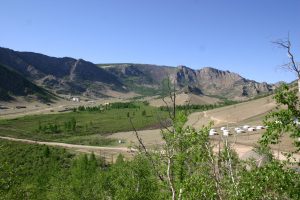
Terelj National Park, Mongolia. Photo: Alexander Buck, IUFRO Headquarters
Studies presented in this session examined the dynamic interrelationship between forest transition and economic, social and political changes, and discussed the implications for forest policy.
As we entered the Anthropocene, human influence became increasingly stronger causing great forest decline, particularly from 1920 onwards. Direct drivers of forest decrease include, among others, population growth and agricultural expansion. Read more…
Keynote Speech by Professor Makoto Yokohari, The University of Tokyo, at the IUFRO Regional Congress for Asia and Oceania
Restoring biodiversity by reforesting urban fabrics is one of common urgent tasks for cities in the world in general and in the Asia and Oceania region in particular. After all, seven of the ten largest cities in the world are in this region. One of these cities is Tokyo. It accommodates 10 million people. More than 30 million people live in the national capital region; this is one third of the total population of Japan. However, despite the high number of population in Tokyo, one third of its area is mountainous, largely covered by natural and planted forest patches.

Professor Makoto Yokohari during his keynote speech. Photo: Gerda Wolfrum, IUFRO Headquarters
We should be aware of the fact that where you find megacities you often also find high biodiversity. Consequently, when talking about biodiversity, we cannot exclude cities as they often coincide with biological hotspots. Of course, the green spaces in cities do not only serve the purpose of biodiversity but they are also used by people for recreation. Urban greens are areas of human comfort. But how to balance between human comfort and biodiversity? Read more…
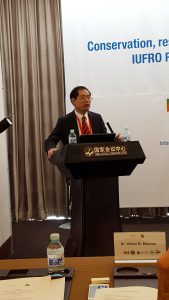
Lu Wen Ming delivering welcome remarks at the dryland session. Photo: Gerda Wolfrum, IUFRO Headquarters
Session A-05(108): Conservation, restoration and sustainable use of dryland ecosystems
There is clear evidence of the fact that the growth rate of CO2 concentration has been increasing and, together with other greenhouse gases, this increase is a main driver of global warming. Unfortunately, these gases have a relatively long lifetime – CO2, for example, has a lifetime of 200-400 years – which means that we are putting a heavy burden on future generations.
Desertification is one of the results of rising temperatures. In China there are actually 4.52 million km2 of drylands constituting 47.1% of the total landmass. Parts of these dryland areas are threatened by degradation and desertification. In Mongolia we are witnessing a marked decrease of the number and area of lakes. This is mainly due to human activities such as coal extraction and irrigation. These and other anthropogenic drivers of change in drylands intensify the pressure on land, which leads to land degradation and decreases the ecosystem value, thus affecting people’s livelihoods. Read more…
Session #: F-7
Session Content: The session brings together a rich collection of research-based evidence on ecosystem service management and the emerging interactions between businesses, industrial plantations and local livelihoods. Along this, the session addresses impacts from changing international trade flows and foreign investments on the sustainable future of forest industry. Key examples are drawn from the Asian context with a reference drawn from other parts of the world. An important aspect is to bridge the gap between the future of forest-based industrial business and recent UN Sustainable Development goals and their inferences on human and environmental development perspectives. Read more…
Session title: A-03 (76) Implications of the Paris Climate Change Agreement (CoP21) on Forests, Water and Soils
Moderator: Richard J. Harper, IUFRO Taskforce Coordinator “Forests, Soil and Water interactions”, Murdoch University, Australia
Tuesday, 25th of October 2016, 10:30-12-30 (306B)
Find more information on the IUFRO Task Force of Forests, Soil and Water interactions at: http://www.iufro.org/science/task-forces/forests-soil-water/

Tree at lake, Laos. Photo: all-free-download
The Paris Agreement established the ambitious goal to limit the global rise in temperature to below 2° C. This session took a look at the impact climate change as well as mitigation measures potentially have on forests, soil conservation and carbon mitigation. Read more…
Panel discussion at the IUFRO Regional Congress for Asia and Oceania, moderated by Peter Mayer, Austrian Research Center for Forests (BFW) and Deputy Coordinator of IUFRO Directors’ Forum
Panelists:
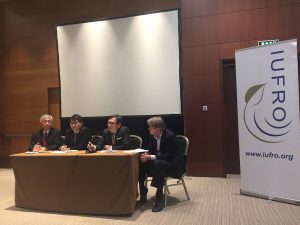
Panelists at the Directors’ Forum
Haruo Sawada, Forestry and Forest Products Research Institute (FFPRI), Japan
Jung-Hwan Park, National Institute of Forest Science (NIFoS), Korea
Gan Kee Seng, Forest Research Institute (FRIM), Malaysia
Jerry Vanclay, School of Environment, Science and Engineering, Southern Cross University, Australia
The IUFRO Directors’ Forum is one of the most important activities within IUFRO and its status of a Special Program reflects this great importance. The forum is a high-level platform for directors of forest research institutions and deans of forest faculties worldwide to debate opportunities and challenges of research management. Read more…
Session D8-03(42)
Moderator: Xiaoquan Zhang
Tuesday, 25 October 2016, 10:30-12:30 (Room 305)
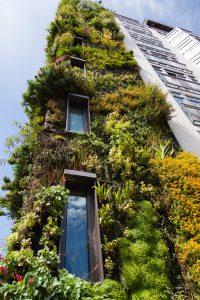
Green hotel. Photo: Vera Kratochvil
During the past 15 years, the rapid expansion of fossil fuels usage has raised global greenhouse gas emissions to the highest levels to date. This has led to a rise in surface temperatures and a significant increase in climate-related risks, including the loss of sea ice in the artic ocean, reduction of mountain glaciers, sea level rise, loss of endangered species, to name but a few.
In urban territories, solar energy and heat are absorbed to a greater extent than in rural areas, thus reducing the evapotranspiration and creating warmer environments. Consequently, the energy demand for cooling is expected to grow strongly with climate change. However, in many cities there is a potential for cooling urban microclimates through adding vegetation and trees and greening roofs and city areas. This will not only help to save energy, it will also be beneficial to the health and quality of life of city dwellers. Read more…









